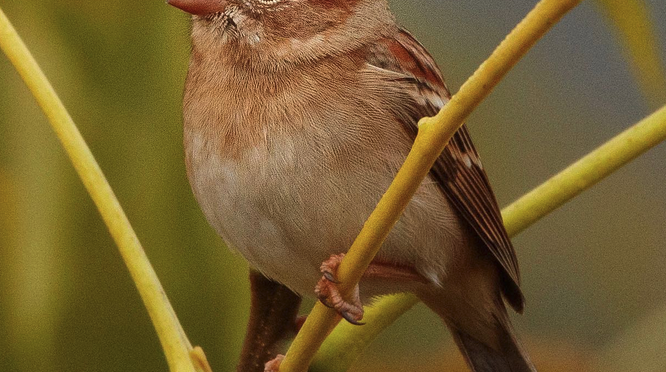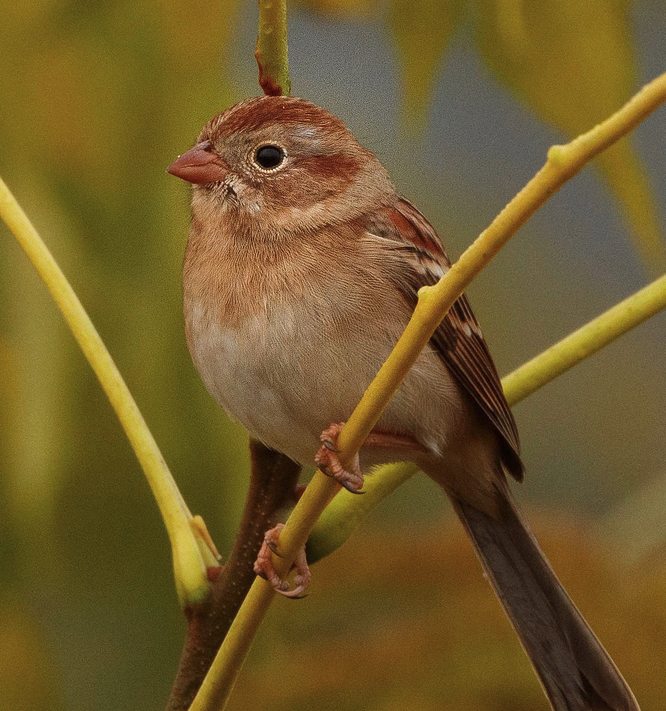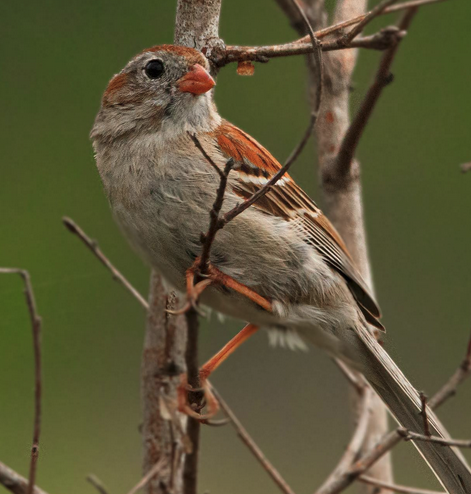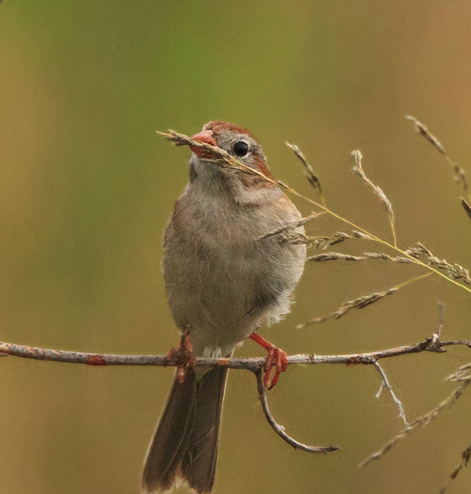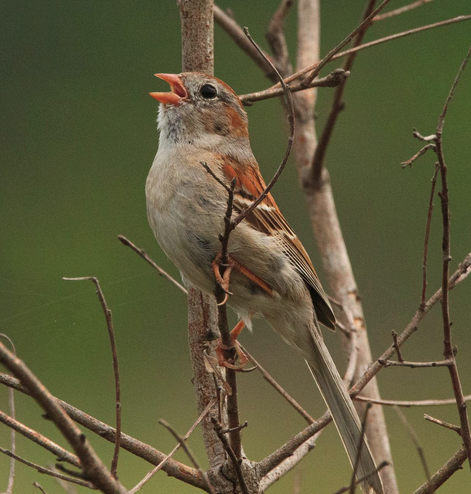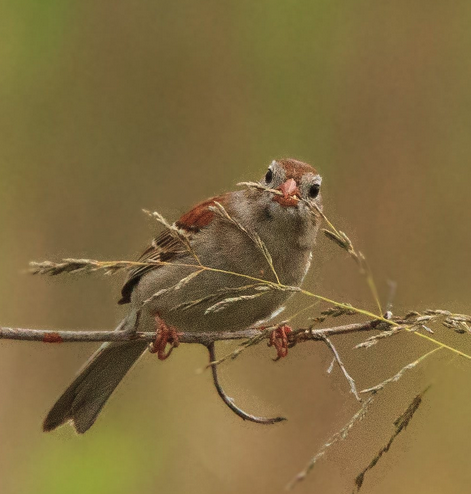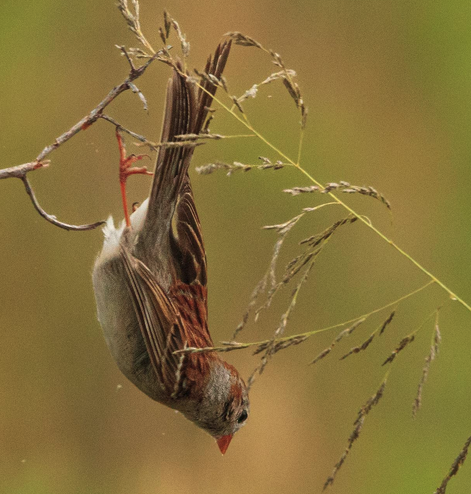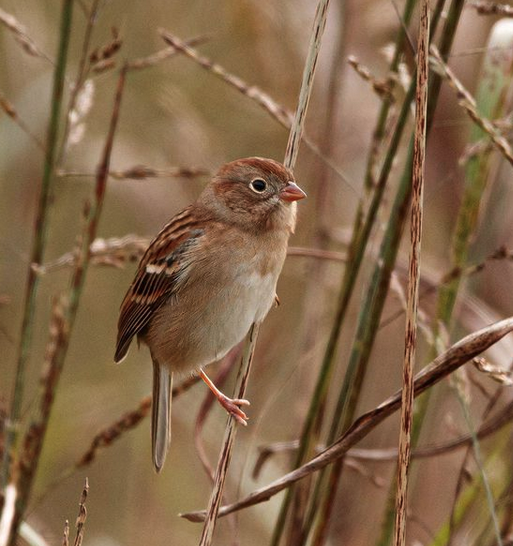By Sally Siko
Though they aren’t the most colorful bird around, I’m always delighted to encounter Field Sparrows when birding throughout the year in North Carolina.
I spotted this little one snacking on some grass seeds near the Sandhills Gamelands Campground in Hoffman NC.

Unlike other species of sparrows which can be tough to identify, Field Sparrows are relatively easy to ID by that white eye ring, orange feet, orange legs and orange beak. They’ve also got a light tannish-orange patch of color behind their eyes and a clear un-spotted grey belly.






Field Sparrows are best found in overgrown fields, clearcuts, maritime thickets, and woodland borders, always where there is a thick grass and scattered shrubs and saplings.
Their proclivity to spend most of their time in open areas and curious disposition makes them an effortless bird to photograph as I was able to get within just a few feet of this bird without it’s concern.
These lovely feathered gems spend the entire year throughout the state of North Carolina so your odds of seeing one soon are pretty good no matter when you step outside.
Aren’t they lovely?
Photos by @sally_siko of @bestlife_birding captured on my mighty mirrorless monster, the @canonusa #R5


